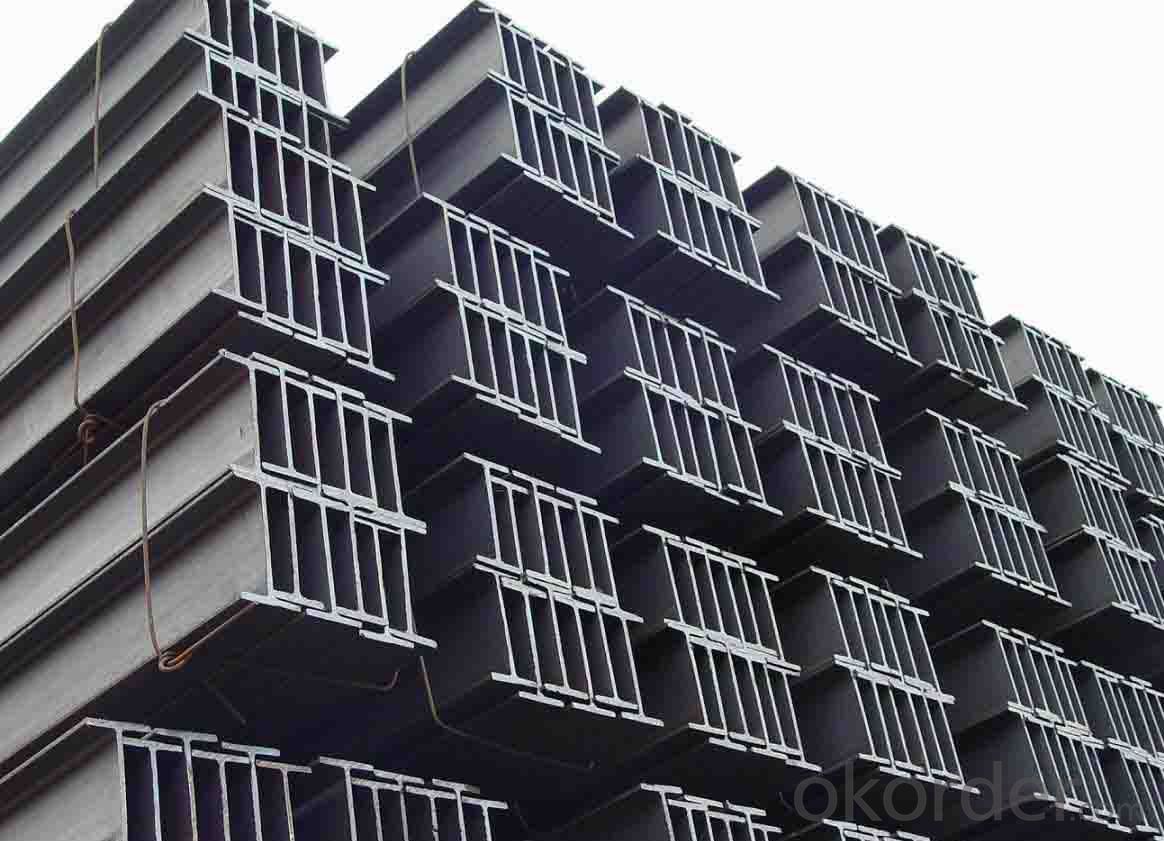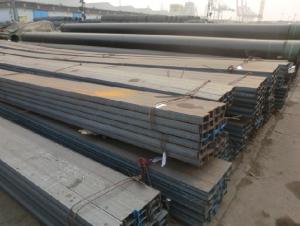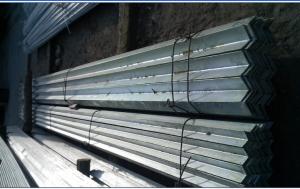IPE/IPEAA Beam with Material Grade GB-Q235
- Loading Port:
- Tianjin
- Payment Terms:
- TT OR LC
- Min Order Qty:
- 25 m.t.
- Supply Capability:
- 10000 m.t./month
OKorder Service Pledge
OKorder Financial Service
You Might Also Like
Product Description:
OKorder is offering high quality Hot Rolled Steel I-Beams at great prices with worldwide shipping. Our supplier is a world-class manufacturer of steel, with our products utilized the world over. OKorder annually supplies products to European, North American and Asian markets. We provide quotations within 24 hours of receiving an inquiry and guarantee competitive prices.
Product Applications:
1. Supporting members, most commonly in the house raising industry to strengthen timber bears under houses. Transmission line towers, etc
2. Prefabricated structure
3. Medium scale bridges
4. It is widely used in various building structures and engineering structures such as roof beams, bridges, transmission towers, hoisting machinery and transport machinery, ships, industrial furnaces, reaction tower, container frame and warehouse etc.
Product Advantages:
OKorder's Steel I-Beams are durable, strong, and resist corrosion.
Main Product Features:
· Premium quality
· Prompt delivery & seaworthy packing (30 days after receiving deposit)
· Corrosion resistance
· Can be recycled and reused
· Mill test certification
· Professional Service
· Competitive pricing
Product Specifications:
1. Invoicing on theoretical weight or actual weight as customer request
2. Standard: EN10025, GB Standard, ASTM
3. Grade: Q235B, Q345B, SS400, ASTM A36, S235JR, S275JR
4. Length: 5.8M, 6M, 9M, 12M as following table
5. Sizes: 80mm-270mm
Dimensions(mm) | |||||
h | b | s | t | Mass Kg/m | |
IPE80 | 80 | 46 | 3.80 | 5.20 | 6.00 |
IPE100 | 100 | 55 | 4.10 | 5.70 | 8.10 |
IPE120 | 120 | 64 | 4.80 | 6.30 | 10.40 |
IPE140 | 140 | 73 | 4.70 | 6.90 | 12.90 |
IPE160 | 160 | 82 | 5.00 | 7.40 | 15.80 |
IPE180 | 180 | 91 | 5.30 | 8.00 | 18.80 |
IPE200 | 200 | 100 | 5.60 | 8.50 | 22.40 |
IPE220 | 220 | 110 | 5.90 | 9.20 | 26.20 |
IPE240 | 240 | 120 | 6.20 | 9.80 | 30.70 |
IPE270 | 270 | 135 | 6.60 | 10.20 | 36.10 |
FAQ:
Q1: Why buy Materials & Equipment from OKorder.com?
A1: All products offered byOKorder.com are carefully selected from China's most reliable manufacturing enterprises. Through its ISO certifications, OKorder.com adheres to the highest standards and a commitment to supply chain safety and customer satisfaction.
Q2: How do we guarantee the quality of our products?
A2: We have established an advanced quality management system which conducts strict quality tests at every step, from raw materials to the final product. At the same time, we provide extensive follow-up service assurances as required.
Q3: How soon can we receive the product after purchase?
A3: Within three days of placing an order, we will begin production. The specific shipping date is dependent upon international and government factors, but is typically 7 to 10 workdays.
Images:


- Q:Can steel I-beams be used in overhead crane systems?
- Yes, steel I-beams can be used in overhead crane systems. In fact, they are commonly used due to their strength, durability, and ability to support heavy loads. Steel I-beams have high load-bearing capacities and are specifically designed to resist bending and twisting forces, making them ideal for supporting the weight of the crane and the loads it carries. Additionally, steel I-beams can be easily integrated into the structural framework of the crane system, providing a stable and secure support structure. Therefore, steel I-beams are a popular choice in the construction of overhead crane systems.
- Q:Are steel I-beams resistant to termites?
- Steel I-beams possess a remarkable resistance to termites. In contrast to wood, termites do not find steel appetizing, thus it does not entice or nourish them. This renders steel I-beams a superb option for construction projects in termite-infested regions, as they remain impervious to termite-induced harm.
- Q:What are the factors to consider when selecting steel I-beams for a project?
- When selecting steel I-beams for a project, there are several factors to consider to ensure the structural integrity and success of the project. These factors include: 1. Load capacity: One of the most important factors is the load capacity of the steel I-beam. It is crucial to determine the maximum weight that the beam needs to support. This can be determined by calculating the expected load and considering any potential future expansions or changes to the project. 2. Span length: The span length refers to the distance between the supporting points of the beam. The longer the span, the greater the deflection, so it is important to choose an I-beam with sufficient stiffness to minimize deflection and maintain structural stability. 3. Beam size and shape: Different projects require different beam sizes and shapes. The size and shape of the I-beam should be chosen based on the specific requirements of the project, including the dimensions of the structure, architectural design, and load distribution. It is important to consult with structural engineers or professionals to determine the appropriate beam size and shape. 4. Material grade: Steel I-beams are available in various material grades, each with different mechanical properties and strengths. The material grade needs to be selected based on the project's requirements, such as the load-bearing capacity, resistance to corrosion, and durability. Consideration should also be given to the environmental conditions of the project site, as certain grades may be more suitable for specific environments. 5. Cost: The cost of steel I-beams can vary depending on the size, shape, and material grade. It is essential to consider the project budget and ensure that the selected beams are cost-effective while meeting the required specifications. Comparing prices from different suppliers or manufacturers can help in finding the best balance between cost and quality. 6. Code compliance: Compliance with building codes and regulations is crucial for any construction project. It is important to ensure that the selected steel I-beams meet the relevant codes and standards for structural integrity and safety. Consulting with structural engineers or local authorities can help in ensuring code compliance. 7. Supplier reliability: Selecting a reliable supplier is essential to ensure the quality and timely delivery of the steel I-beams. Consider factors such as the supplier's reputation, experience, and ability to provide necessary documentation and certifications. By carefully considering these factors, one can make an informed decision when selecting steel I-beams for a project, ensuring the structural integrity, safety, and success of the construction.
- Q:How many meters is I-beam one?
- I-beam is also called steel girder (English name Universal Beam). It is a strip of steel with an I-shaped section. I-beam is divided into ordinary I-beam and light I-beam, H steel three. It is a section steel whose shape is trough.
- Q:Can steel I-beams be used in outdoor or exposed environments?
- Yes, steel I-beams can be used in outdoor or exposed environments. Steel is known for its durability and weather resistance, making it a suitable material for outdoor applications. However, to ensure the longevity of steel I-beams in such environments, they should be properly protected against corrosion. This can be achieved through various methods, such as applying protective coatings like galvanization or painting, or using stainless steel beams that are inherently resistant to corrosion. Regular maintenance and inspections are also essential to identify and address any signs of corrosion or damage. Overall, with proper protection and maintenance, steel I-beams can withstand outdoor or exposed environments effectively.
- Q:How do steel I-beams distribute loads?
- Steel I-beams distribute loads by transferring the weight or force applied to them to the vertical support columns or walls on either end of the beam. The flanges (horizontal top and bottom sections) of the I-beam resist bending, while the web (vertical middle section) resists shear stress. This design allows the I-beam to efficiently distribute and transfer loads along its length, making it a common choice for structural support in buildings and bridges.
- Q:Are there any building codes or regulations that govern the use of steel I-beams?
- Yes, there are building codes and regulations that govern the use of steel I-beams in construction. These codes and regulations vary depending on the country and jurisdiction, but they generally provide guidelines for the design, installation, and structural integrity of steel I-beams. In the United States, the use of steel I-beams is regulated by the International Building Code (IBC), which is adopted by most states and local jurisdictions. The IBC specifies the minimum requirements for the design and construction of buildings, including the use of steel I-beams. It provides guidelines for the size, shape, and strength of steel beams, as well as the connections and fasteners to be used. Additionally, there are specific codes and standards that govern the use of steel I-beams in different types of construction, such as residential, commercial, and industrial buildings. For example, the American Institute of Steel Construction (AISC) provides standards for the design and construction of steel structures, including guidelines for the use of steel I-beams. Other countries may have their own building codes and regulations that govern the use of steel I-beams. These codes and regulations are typically based on international standards and guidelines, such as those established by the International Organization for Standardization (ISO) and the European Committee for Standardization (CEN). It is important for architects, engineers, and builders to comply with these building codes and regulations to ensure the structural integrity and safety of buildings. Failure to adhere to these codes can result in legal consequences, as well as jeopardize the safety of occupants and the overall performance of the structure. Therefore, it is essential to consult and follow the applicable building codes and regulations when using steel I-beams in construction projects.
- Q:How are steel I-beams connected to other structural elements?
- Steel I-beams are typically connected to other structural elements through welding, bolting, or through the use of specialized connectors such as beam clamps or cleats. These connections ensure the stability and integrity of the overall structure by transferring loads and forces between the I-beams and other components.
- Q:Do I need to stagger a distance between the wing plate splice and the web splice at the butt joint of the I-beam?
- In order not to force the steel column or the steel beam on the same plane, that is, the same weld plane is subjected to force
- Q:Can steel I-beams be used for seismic-resistant structures?
- Indeed, seismic-resistant structures can utilize steel I-beams. Steel is widely employed in construction due to its exceptional strength and ductility, making it well-suited for withstanding seismic forces. I-beams, in particular, are frequently employed in seismic-resistant structures owing to their structural efficiency and capacity to withstand bending and torsional forces. In the event of an earthquake, buildings encounter lateral forces that can cause substantial damage. Steel I-beams are designed to evenly distribute these forces throughout the structure, thus minimizing the risk of structural failure. Moreover, steel possesses the advantage of being a flexible material, enabling it to absorb and dissipate seismic energy, thereby reducing the impact of the earthquake on the structure. To guarantee the seismic resistance of steel I-beams, engineers adhere to specific design guidelines and codes that take into account factors such as the seismic activity of the location, soil conditions, and building height. These guidelines aid in determining the appropriate size, shape, and spacing of the I-beams to provide the necessary strength and flexibility for seismic resistance. Additionally, steel structures offer the advantage of being more easily repaired and retrofitted after an earthquake compared to other materials. If damage occurs, damaged components can be replaced or repaired without compromising the overall structural integrity. Nevertheless, it is important to note that the seismic resistance of a structure cannot solely rely on the utilization of steel I-beams. It necessitates a comprehensive design approach that incorporates other seismic-resistant measures such as bracing systems, base isolators, and damping devices. The overall design should consider the specific seismic hazards of the region and adhere to local building codes and regulations. In conclusion, steel I-beams can be effectively employed in seismic-resistant structures due to their exceptional strength, flexibility, and ability to distribute seismic forces. However, proper design and engineering practices, in conjunction with other seismic-resistant measures, are necessary to ensure the overall safety and performance of the structure during an earthquake.
1. Manufacturer Overview |
|
|---|---|
| Location | |
| Year Established | |
| Annual Output Value | |
| Main Markets | |
| Company Certifications | |
2. Manufacturer Certificates |
|
|---|---|
| a) Certification Name | |
| Range | |
| Reference | |
| Validity Period | |
3. Manufacturer Capability |
|
|---|---|
| a)Trade Capacity | |
| Nearest Port | |
| Export Percentage | |
| No.of Employees in Trade Department | |
| Language Spoken: | |
| b)Factory Information | |
| Factory Size: | |
| No. of Production Lines | |
| Contract Manufacturing | |
| Product Price Range | |
Send your message to us
IPE/IPEAA Beam with Material Grade GB-Q235
- Loading Port:
- Tianjin
- Payment Terms:
- TT OR LC
- Min Order Qty:
- 25 m.t.
- Supply Capability:
- 10000 m.t./month
OKorder Service Pledge
OKorder Financial Service
Similar products
New products
Hot products
Related keywords



























